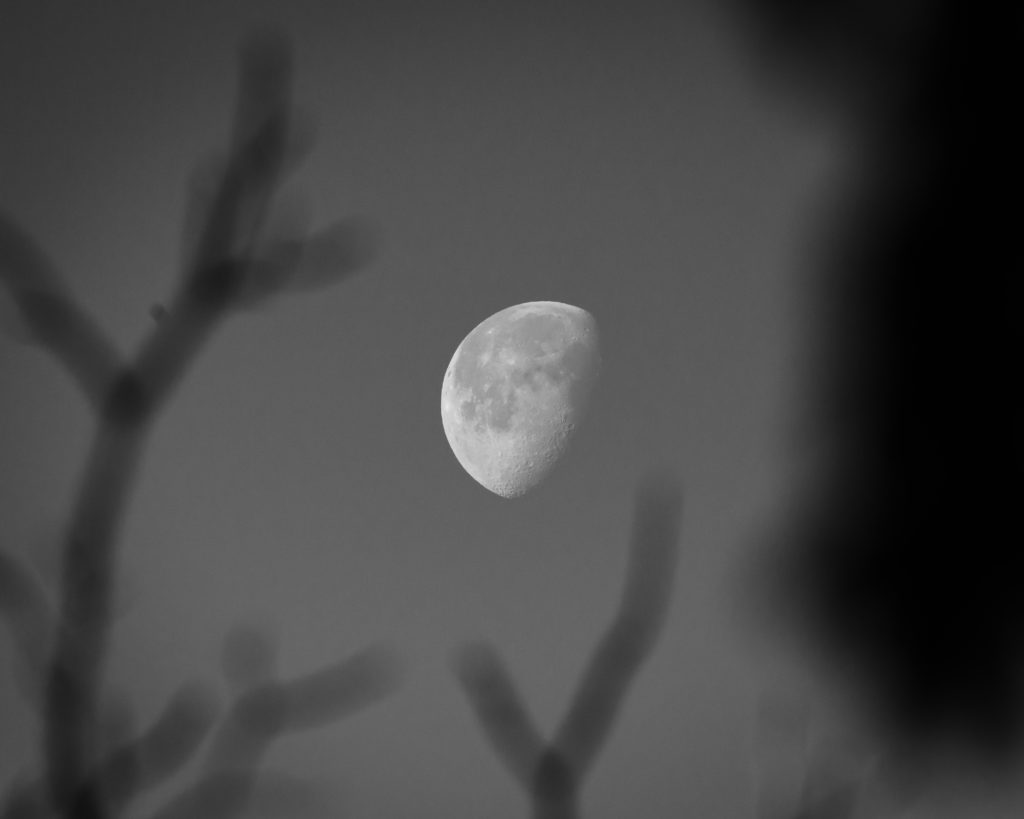
I looked out the window this morning and saw the Moon hanging clear and bright in a crisp and dry winter sky. So, of course, I had to take a picture!
Here you see the history of the ancient solar system etched like geological hieroglyphs into the face of our nearest celestial neighbor. The dark regions, the maria (or seas), are younger than the heavily cratered light-colored regions of the terrae (or highlands). The large dark region at the upper left is Oceanus Procellarum (the Ocean of Storms), which is capped by Mare Imbrium (Sea of Rains) to the north and Mare Nubium (Sea of Clouds) and Mare Humorum (Sea of Moisture) to the south. To the right in this image, closer to the shadow beyond the terminator, the line between night and day on the Moon, you can see the circular Mare Serenitatis (Sea of Serenity), below which is Mare Tranquillitatis (Sea of Tranquility). All these seas are lowlands flooded with lava after major meteor impacts some 3 billion years ago. The highlands are older and heavily peppered with craters from the days when the solar system was a more crowded and dangerous place.
You can see a few large craters here also. At the extreme western edge of the Moon (left in this image) you see the dark and worn crater Grimaldi. Copernicus, above and left of center, is a white bulls-eye bathed in full sunlight. Artistotle and Eudoxus are stacked on top of each other at the top, near the terminator. Theophilus is beautifully shadowed along the terminator just below center, while Maurolycus and Tycho grace the highlands to the south.
In this image, the Moon is nearly 5 days past full and 71% illuminated. The image was snapped by aiming a Nikon D750 camera out the window with a Nikon 200mm-500mm f/5.6 lens at 500mm, f/8, 1/2000s, ISO400. Cropped and lightly processed in Adobe Lightroom. Who says astrophotography has to be hard?
Share This: